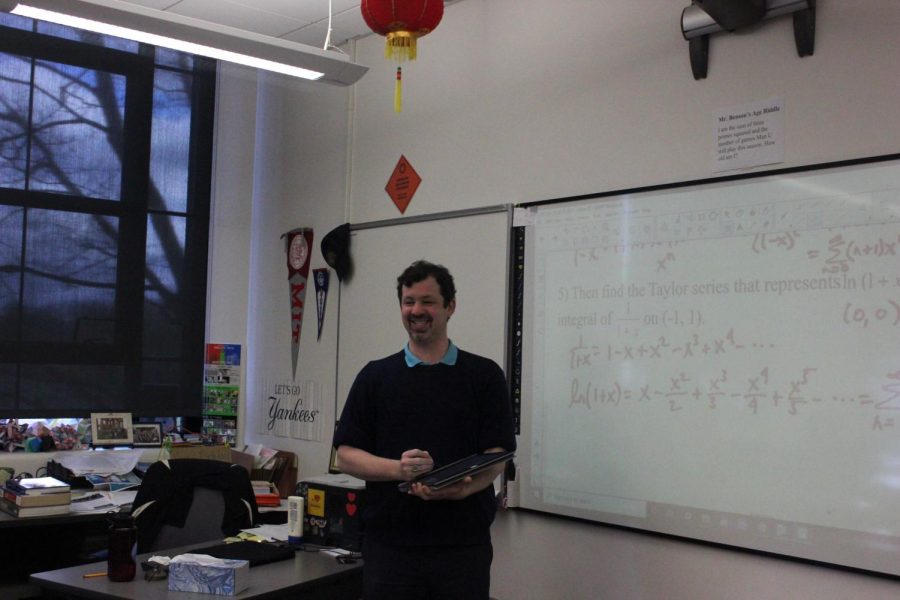Flipped Classrooms: Best as a Choice, Not a Given
Mr. Benson teaches his classes in a flipped classroom style.
March 5, 2020
Teachers are always striving to find the most effective ways to educate their students in the most time-efficient manner. One new teaching method that is becoming more and more popular is the “reverse” or “flipped” classroom method. This style of teaching encourages students to learn what would normally be taught in the classroom through a lecture at home either by reading a textbook, watching online videos, or watching lectures prepared by the teacher. During the school day, students complete worksheets similar to the homework they would have normally done at home and then have the opportunity to ask a teacher questions about the material they learned the night before.
Proponents of this style of teaching say that it is more effective than traditional instruction because it allows each student to learn at his or her own pace; for example, students can simply rewind a video if they were confused about an explanation of a certain concept. Websites like Khan Academy have also made finding high-quality instructional videos for reverse teaching straightforward. However, is substituting face-to-face instruction with online videos really more effective?
Some students do agree that flipped classroom instruction is effective. Junior Zan Rice told Register Forum, “Flipped classrooms are helpful for students who work at a quicker pace. However, it does not allow for some students to have enough structure from what I’ve seen. In my experience, it’s worked for me, however, I have seen that some classmates have had a hard time keeping up with the pace while keeping up with the material.” Danny Klein ’20, a teaching assistant for Mr. Benson’s AP Calculus class (which is taught in the flipped style), also believes it doesn’t work well for all students. Klein conducted a survey of the class as part of his TA project along with fellow TAs Kamali Kuno ’20 and Noah Johnson ’20. Klein says, “Overwhelmingly, students who learn quickly (just by watching videos) prefer the flipped classroom because it’s less work if you understand the material early. However, students who need to ask questions and do extra practice reported preferring normal classroom setups.” According to the TAs’ data, of students who said that they prefer the flipped classroom style, a majority said that they consider themselves “quicker than average” learners, while less than 10% of students who prefer the normal classroom setup consider themselves to be fast learners.
It seems apparent that the students who do best in a flipped class are students who already consider themselves to be fast learners, capable of understanding information from just watching a single video. However, when it comes down to whether or not this new teaching approach is actually more effective for the average student, it seems to fall flat. Learning without an instructor does not provide students a format to ask clarifying questions the way students in a normal classroom would, particularly students who struggle to grapple new concepts quickly. Perhaps, CRLS would be better equipped to serve varying students’ needs by creating a flipped class option that students could choose for themselves, instead of forcing students who don’t feel comfortable with the paradigm into it.
This piece also appears in our February 2020 print edition.










